The History of the VW Golf Mk2
Here's another in our model history series, this time charting the birth and evolution of the second-generation Golf model. Read on and we'll discuss GTI, G60, Rallye, Country, and GTI Engineering special edition.
Mk2 Golf Launch
In September 1983, VW launched the MkII Golf (Typ 19E) along with its booted sibling the Jetta at the Frankfurt Motor Show. It was slightly larger, 17cm longer in fact, and more refined than the Mk1, and this time was designed in-house by VW's design director Schäfer, though it was clearly still influenced by the Italian-penned Mk1. Weight was up by a reported 120kg, but its slippery shape meant performance and economy were in most instances, up on the equivalent engined Mk1.
Sales in Europe took off immediately, but UK customers requiring a right-hand drive version had to wait until February 1984 to take delivery of their new Golf. American customers had an even longer delay, as the US model didn't go on sale until 1985 in the States.
Looking for a Mk2 Golf? Read our Golf Mk2 Buyers Guide here.
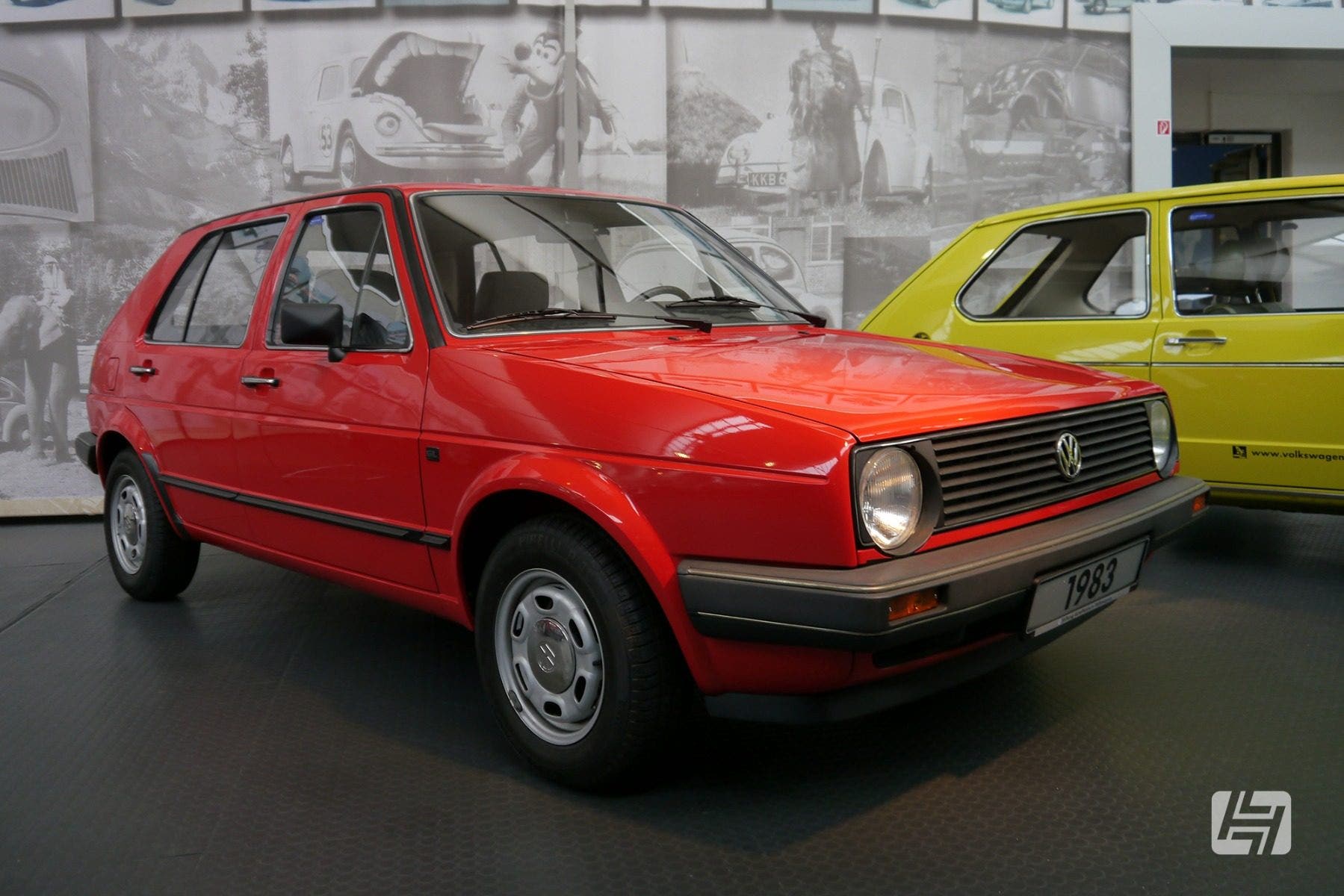

Mk2 Golf GTI
Unlike the Mk1, the Mk2 could wear a GTI badge from the get-go, and it was launched alongside the other trim and engine options for the 1984 model year.
Specification for the GTI was pretty much unchanged until 1987 model year, aside from some wheel and minor exterior and interior trim changes. The 139bhp 16v engine (KR code) joined the 112bhp 8v GTi in August of 1986. The following year, 8V GTI models had their fuel injection system updated from mechanical Bosch K-Jetronic to the fully-electronic Digifant system by Siemens. The 16v models, however, remained using K-Jet throughout production.
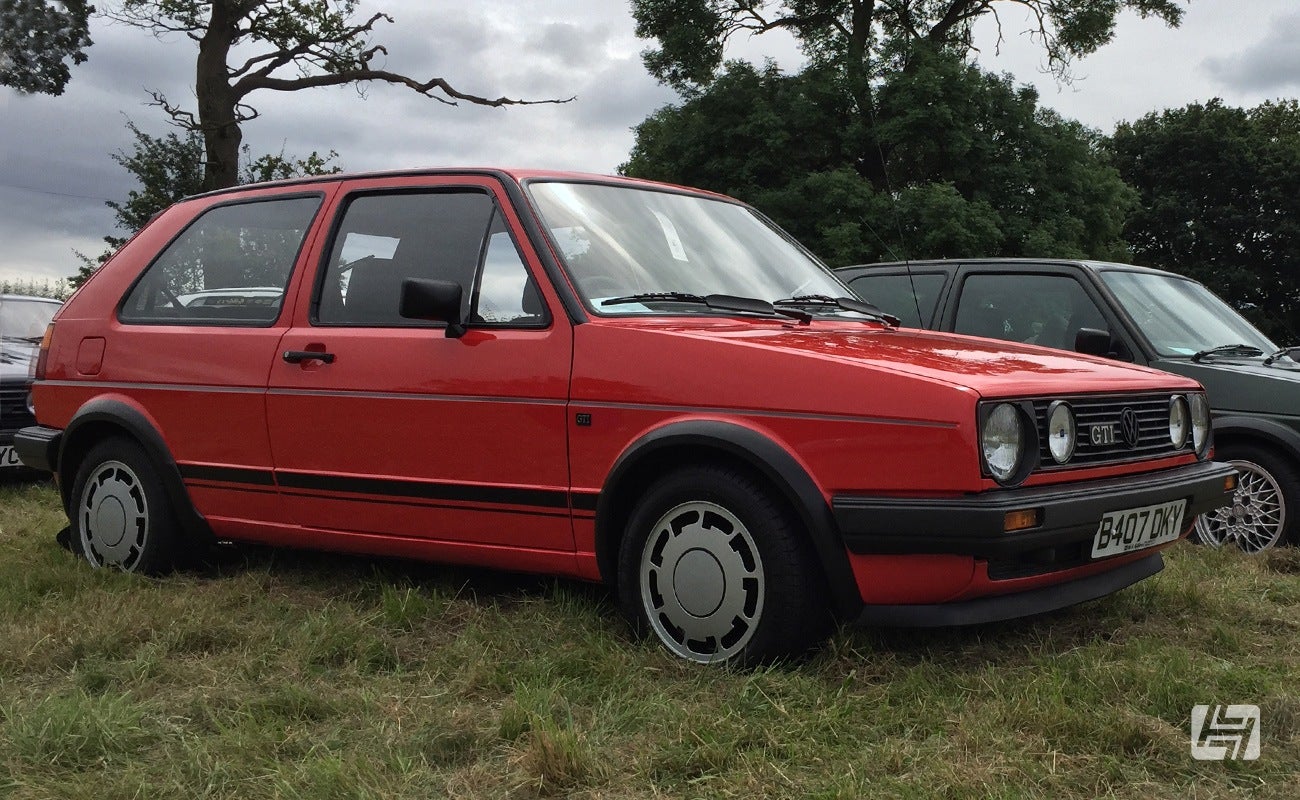

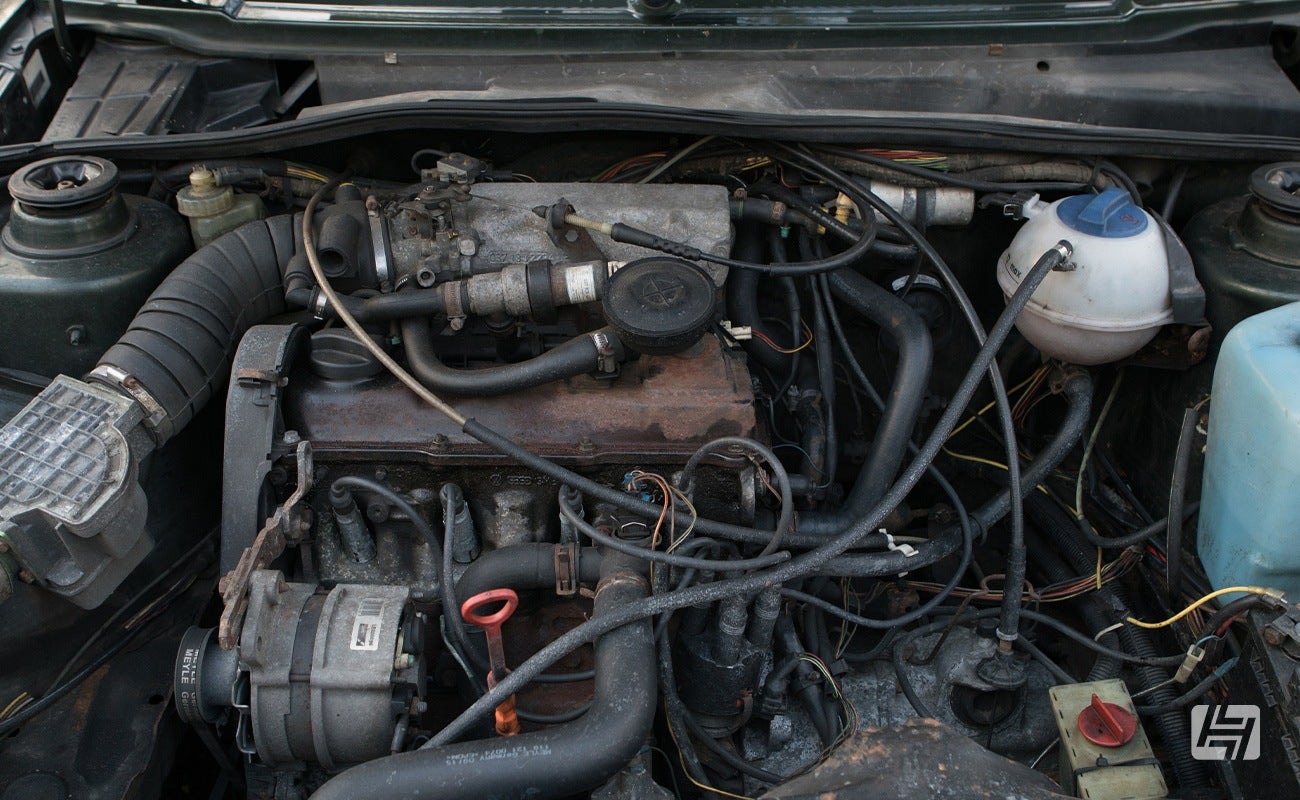

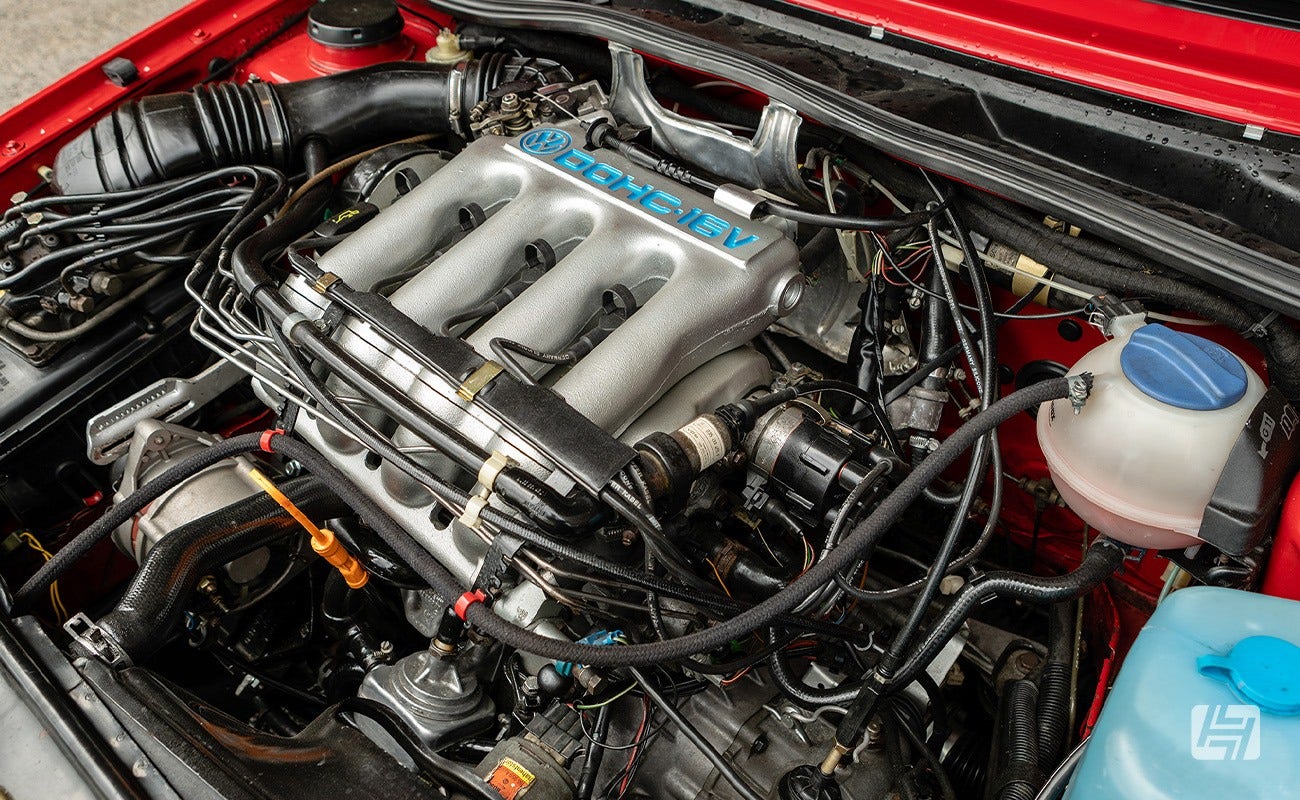

1988 facelift
It was in August 1987 that styling changes were unveiled for the 1988 model year. The front grille lost a couple of bars, changing from seven slats to five, the drivers door windows became larger, with the 1/4 light glass being discarded and the door mirrors moved further forward too. The exterior body trim changed from a thin stick-on type, to a thicker clip-on arrangement, and the plastic arch trims were restyled at the front to flow into the side moulding.
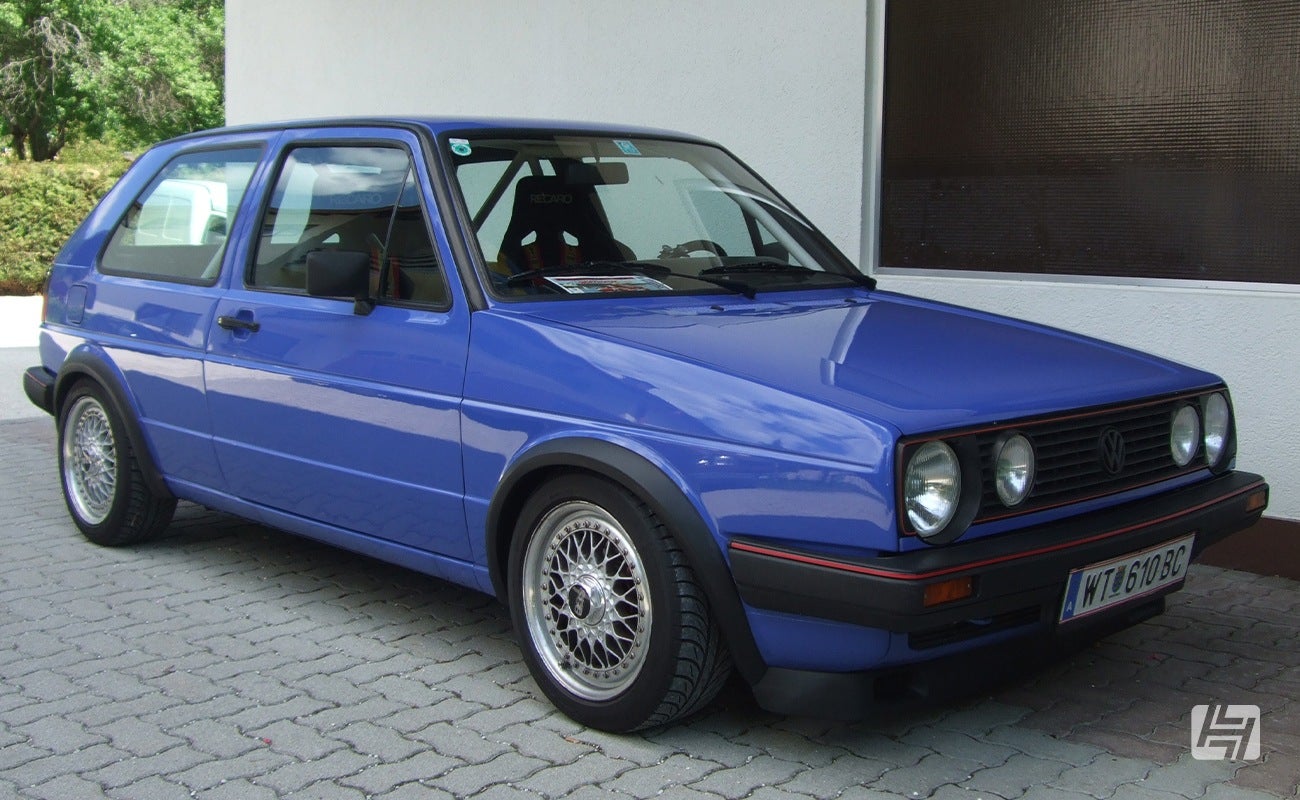

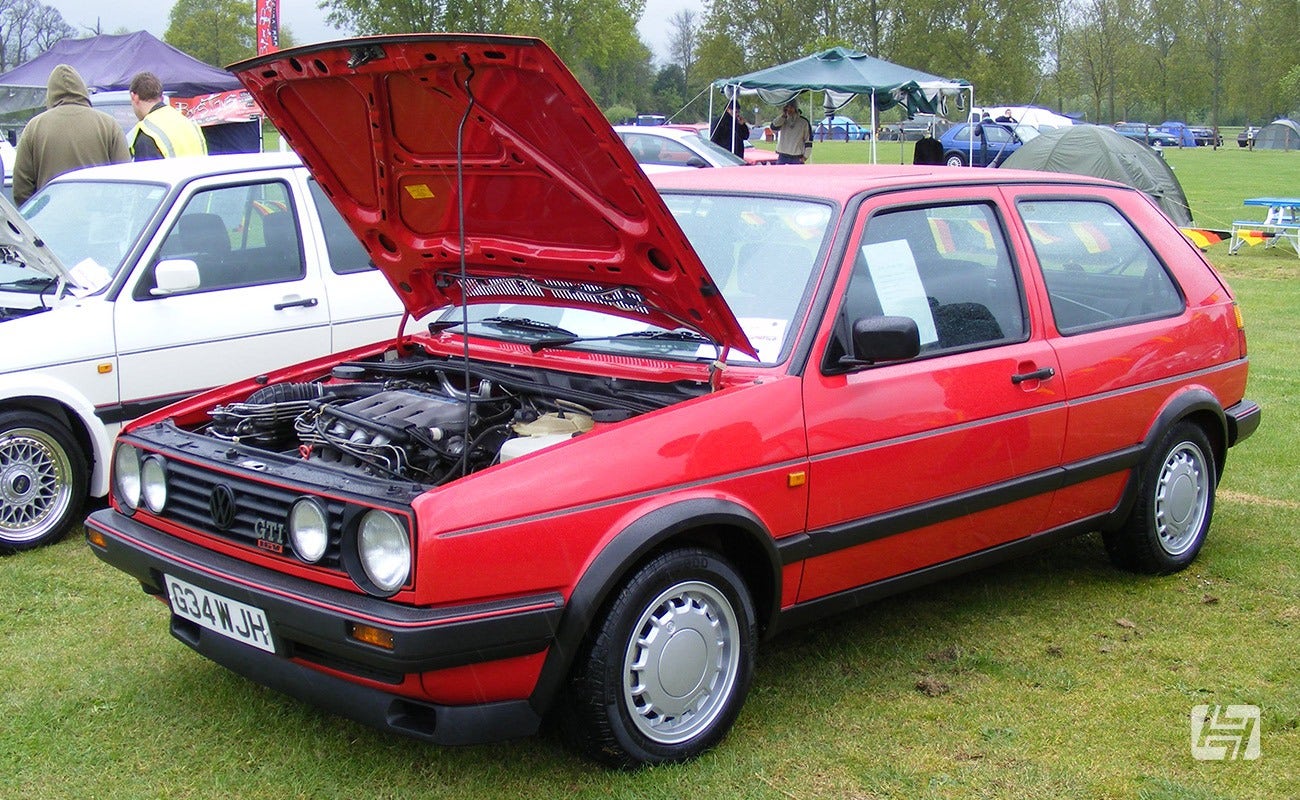

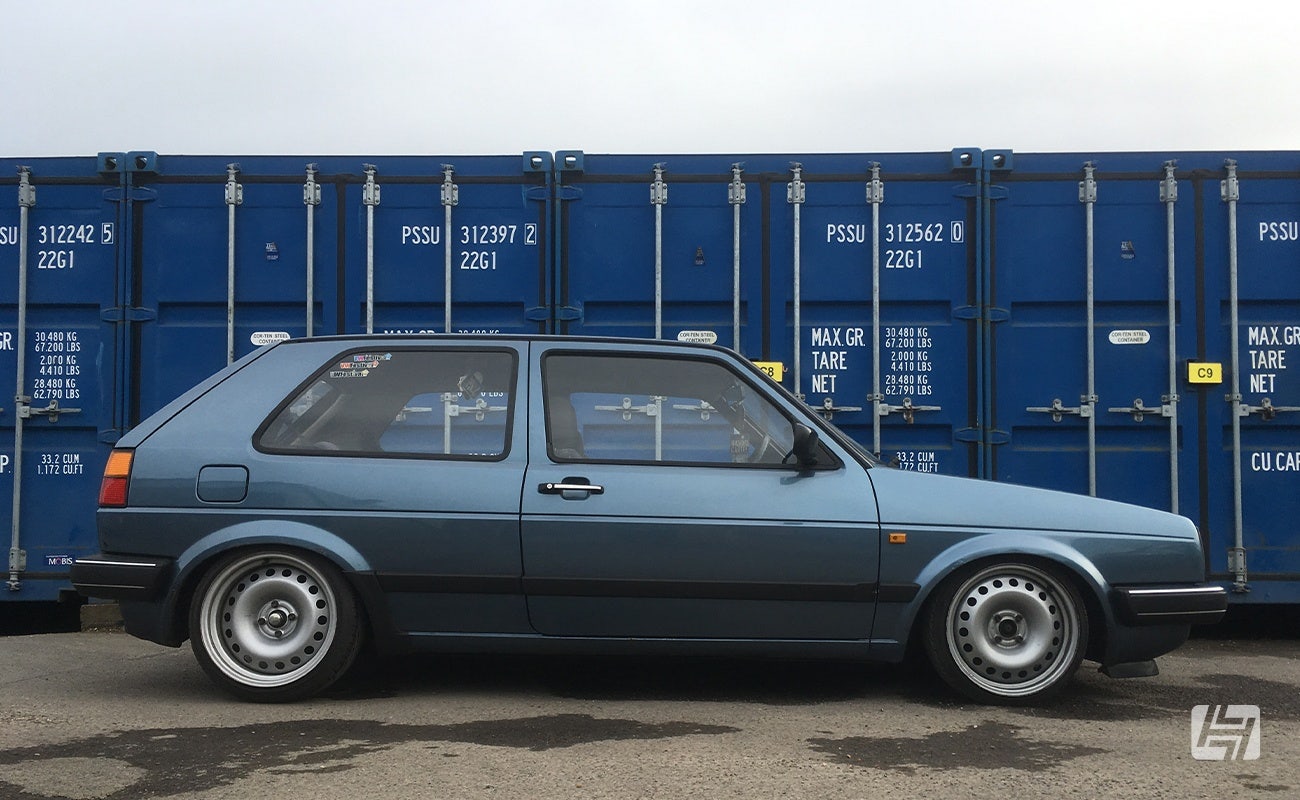

'90 spec model changes
August 1989 saw the change from Typ 19 to Typ 1G, the biggest change to the car externally being the availability of “Big-Bumpers” on the GTi and GL models, along with slimmer rub-strips, and re-modelled arch-trims which led to the full-length sill covers. Beneath the skin, the car had a new electrical system, known as Central Electric II (easily identified by the hazard switch moving from the dash to the centre of the steering column shroud).
October 1991 saw Mk2 production drawing to a close, so as before, VW released a series of run-out models, all cars now featured tinted glass, electric front windows, 1/2 tinted rear light lenses, and BBS RA alloy wheels, metallic paint was also a no-cost option. Shortly after in February 1992, Volkswagen officially dropped the Mk2 from its line-up, replacing it with the Mk3 Golf.
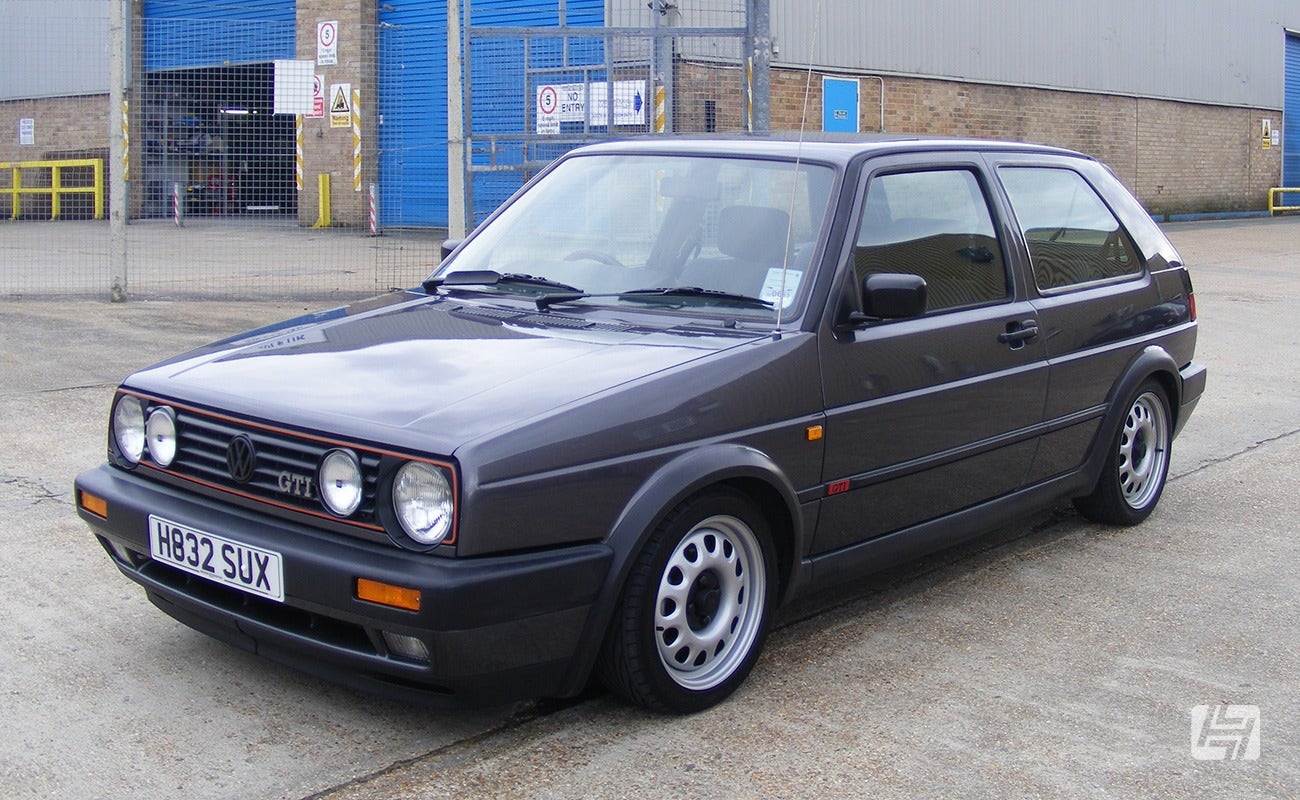

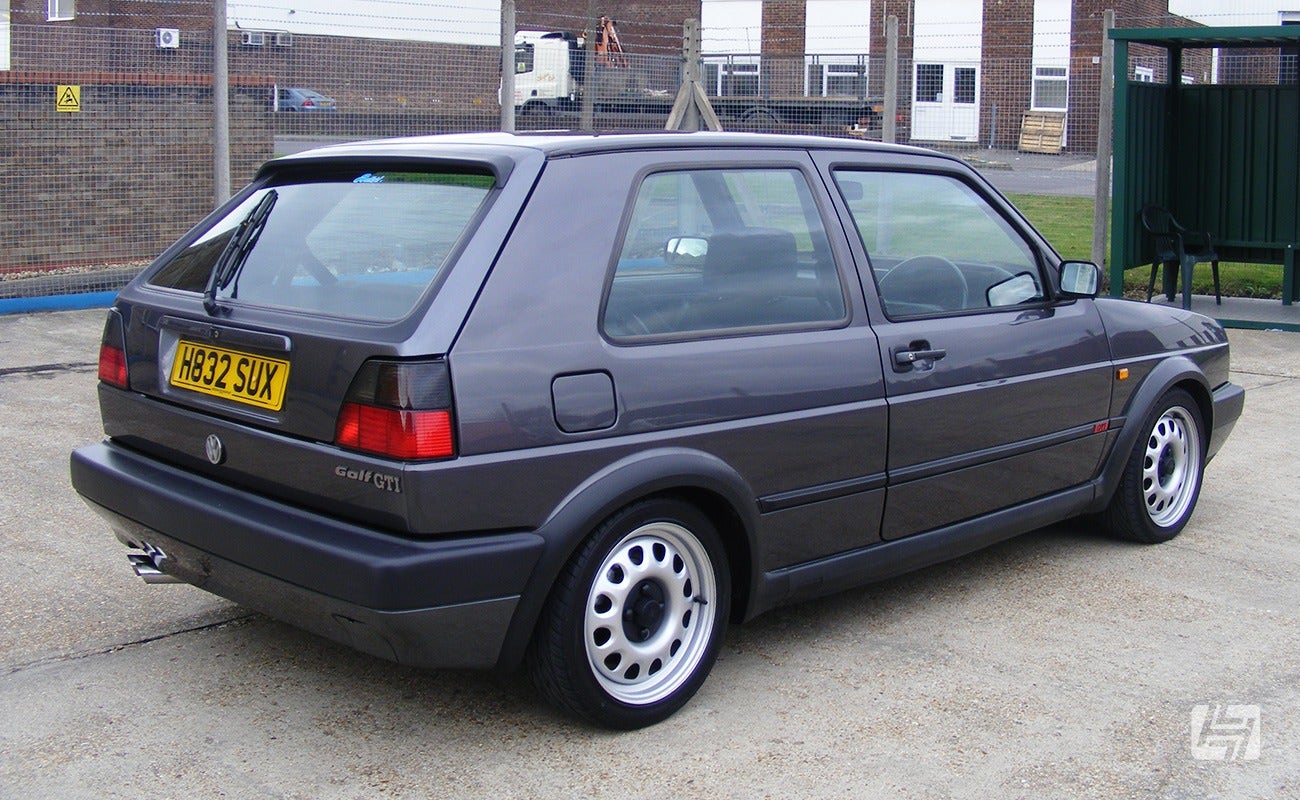

US Specification Golf Mk2
From 1985 the Mk2 Golf was sold in the US, but unlike the Mk1 model, it never wore the Rabbit badge, and it was only produced in the Westmoreland factory in Pennsylvania up until its closure in July 1988. After that, all Mk2 Golf modes sold in the US were produced back in Wolfsburg and then shipped over. Around 277k Mk2 Golfs were sold in the US between 1985-1991.
Noticeable differences between the US and European cars include the 'TV' style square headlamps with specific Westmoreland grille to match, later replaced by rectangular Jetta items. Side markers on the leading edges of the front wings, and deeper plastic bumpers to assist with pedestrian and passenger safety.
Outside of Germany, the TAS factory was also drafted in to produce models for the then 6 Yugoslav republics and produced more than 25,000 vehicles up until the outbreak of war in 1990. The vehicles offered by TAS were of an even lower spec than the C models available in the rest of Europe and were designated the JX.
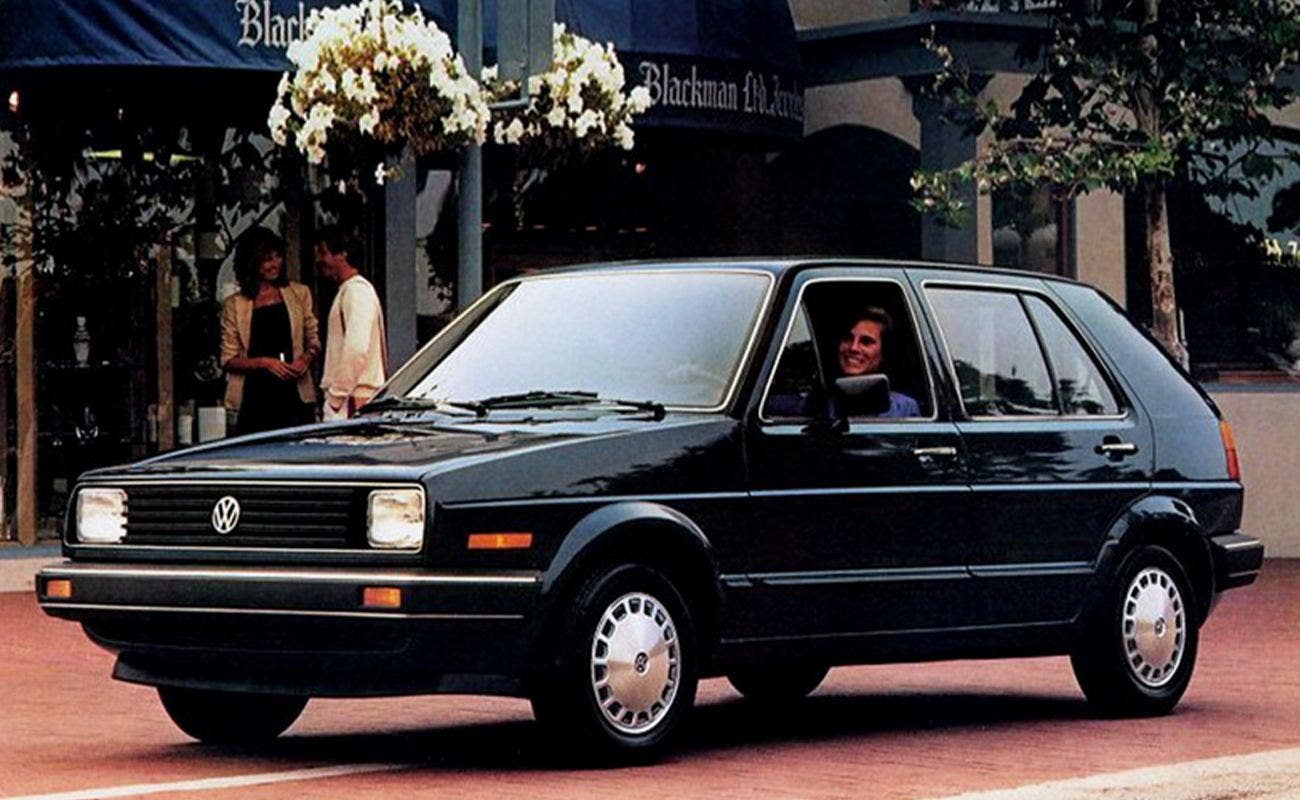

Special Editions: GTI Engineering
In 1982 Volkswagen appointed "Official Audi Volkswagen Conversion Specialist" status to Silverstone-based tuning company, GTI Engineering. Founded by Richard Lloyd in 1978, he was racing a Mk1 GTI and also managed VW GB's racing programme, culminating in British Saloon Car Championship class wins in 1977, 1978 and 1979. The knowledge gained, and reputation earned stood Lloyd and his twenty-strong team in a good place to offer a range of go-faster packages to the discerning Golf or Jetta owner looking for more grunt.
8v GTI owners could see up to 165bhp with the GTI Engineering 2 litre conversion, which would include a new crank, machined block, heavy duty bearings, alloy pistons, flowed cylinder head and manifolds, sports cam and modified ignition and injection system for less than £4000 fitted, back in the mid-nineties.
For owners of the already spritely 16v, a very healthy 195bhp could be achieved with similar modifications and a capacity increase to 2.1 litres.
With their roots in motorsport, GTI Engineering would also install bespoke suspension packages, including Bilstein or Koni shocks, custom springs, uprated anti-roll bars with a race-bred technician to adjust the handling to best suit your needs.
Interestingly sister company, Richard Lloyd Racing went on to campaign a Porsche 924 GTR in Canon colours, and later a 956 and 962 sponsored by the same camera company in some serious endurance events, including LeMans 24 Hours.
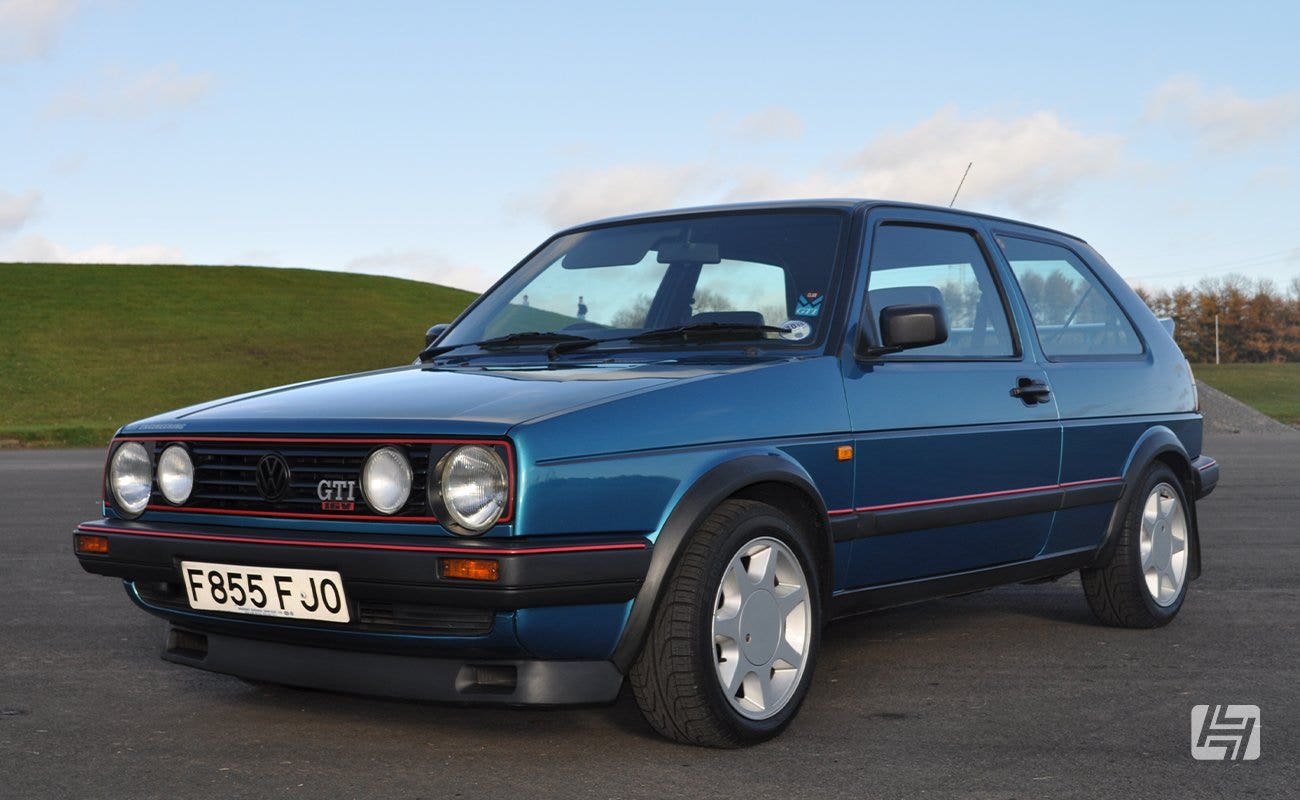

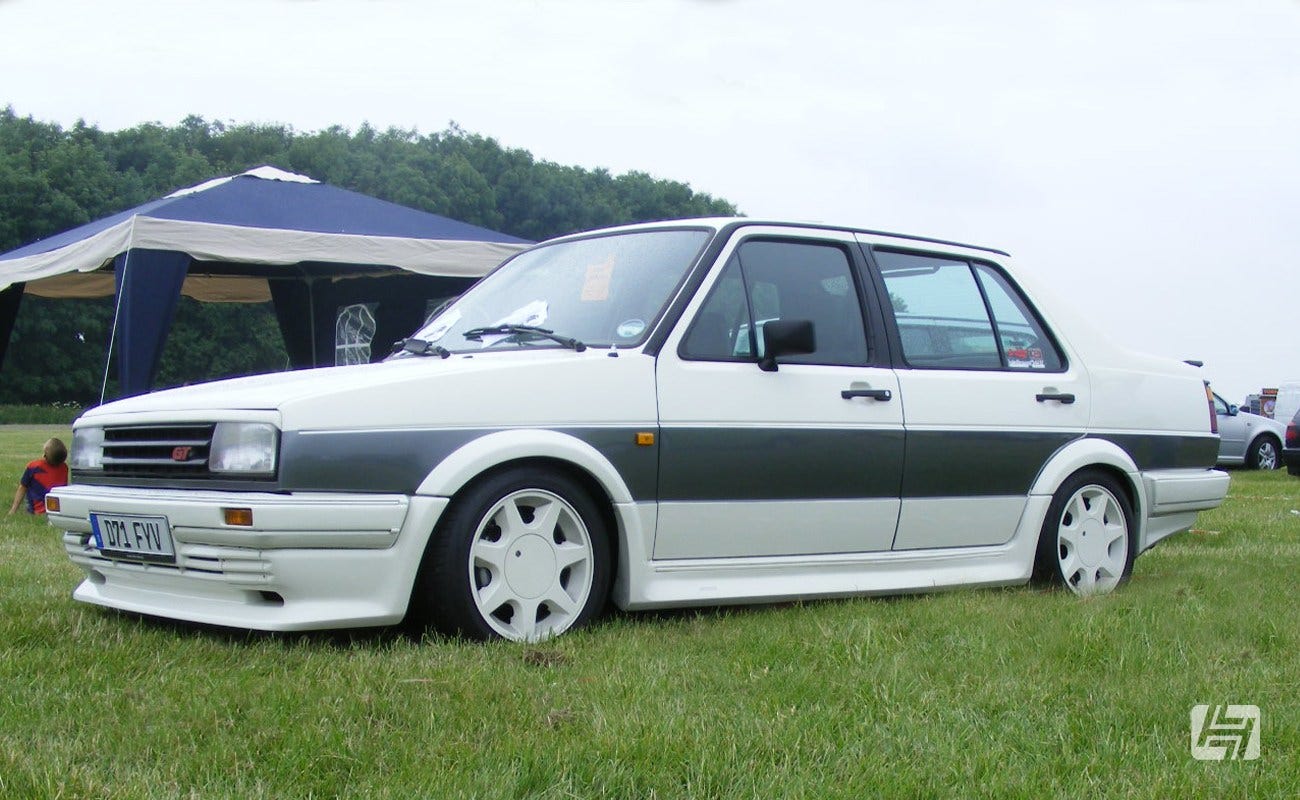

Special Editions: The G60
The early 90s saw the development of some new Interesting new models from VW, though sadly in the UK we were only going to see one of them (in an official sense at least), and both were only available in LHD. The G60 engine came about following research done by Volkswagen on their 1987 Polo GT G40 project, a 1300cc supercharged pocket rocket capable of hitting 120+mph from the box. The G60 was based on the EA827 series motor (essentially the 1781cc 8v motor) by the time VW had finished modifying it, it bore little resemblance to the original 8v GTI lump, with pretty much every part being different. The "G" was used to describe the shape of the supercharger scrolls, and the 60 is related to the inlet size of the 'charger (60mm).
Initially released in the Passat B3, the engine was then fitted into the Mk2, thus creating the Mk2 GTI G60. The Mk2 GTI G60 was for the most part very similar to the GTI 16v of the day, but featured a few structural differences invisible from the outside. The windscreen was bonded in as opposed to relying on a rubber seal, which increased the rigidity of the shell (we sell the Mk2 Golf bonded screens here) also the tunnel running through the centre of the car was larger, and that of the Golf Syncro (the 4x4 Golf), a stronger shell in itself, and was to make life a bit easier for some of the other G60 models to come, in this instance though the boot-floor was still that of the FWD car.
The G60 was available in a number of special editions. The Edition One (which was also available in 8v and 16v versions) was available in Dark Burgundy Pearl Effect (also known as Aubergine), Pearl Grey, or Brilliant Black Metallic. It featured; a sticker on the bonnet, "Wolfsburg Edition" plaques replacing the side repeaters, colour-coded mirrors, wider arch trims (for the G60), BBS RM012 two-piece split rim wheels, 1/2 tint rear lenses, white front lenses, black VW roundel on the front, black VW roundel on the back, leather gear knob and steering wheel, and a one-off interior in blue, with matching carpet, door cards, and seats (electric Recaros on the G60). The 3 door models also featured Chromalux glass, on the rear 3 windows which were darker, and had a Siglachrome coating lending it an almost mirror-like finish.
The Fire and Ice G60 was offered again across a wide range of engines, including a 1800cc Turbo Diesel and of course the G60, and had been created by VW in honour of the 1990 film "Fire, Ice and Dynamite" which starred Roger Moore and Simon Shepherd. Overall the car was similar looking to the standard GTI, but was painted a unique shade of "Dark Violet Pearl" and adorned with suitably garish pink and purple decals to the C pillars. However, it wasn't until you got into the Fire and Ice that the real impact was to be had. The interior was a mix of Blue and Purple upholstery, with huge embroidered logos on the backrest of each seat, certainly an acquired taste.
The final limited edition variant of the FWD G60 was the Edition Blue, only available as a G60 in Austria and Switzerland (the domestic market only got the PF code engine) the Edition Blue as the name suggests was blue in colour (Moonlight Blue Pearl Effect) with matching leather interior, it also featured wider G60 arch trims, BBS RM012 2 piece split rim wheels, the GTI side plaques were replaced with "Edition Blue" plaques, colour coded mirrors, 1/2 tint rear lenses, a 3 spoke leather-trimmed steering wheel, and leather handbrake and gear knob.
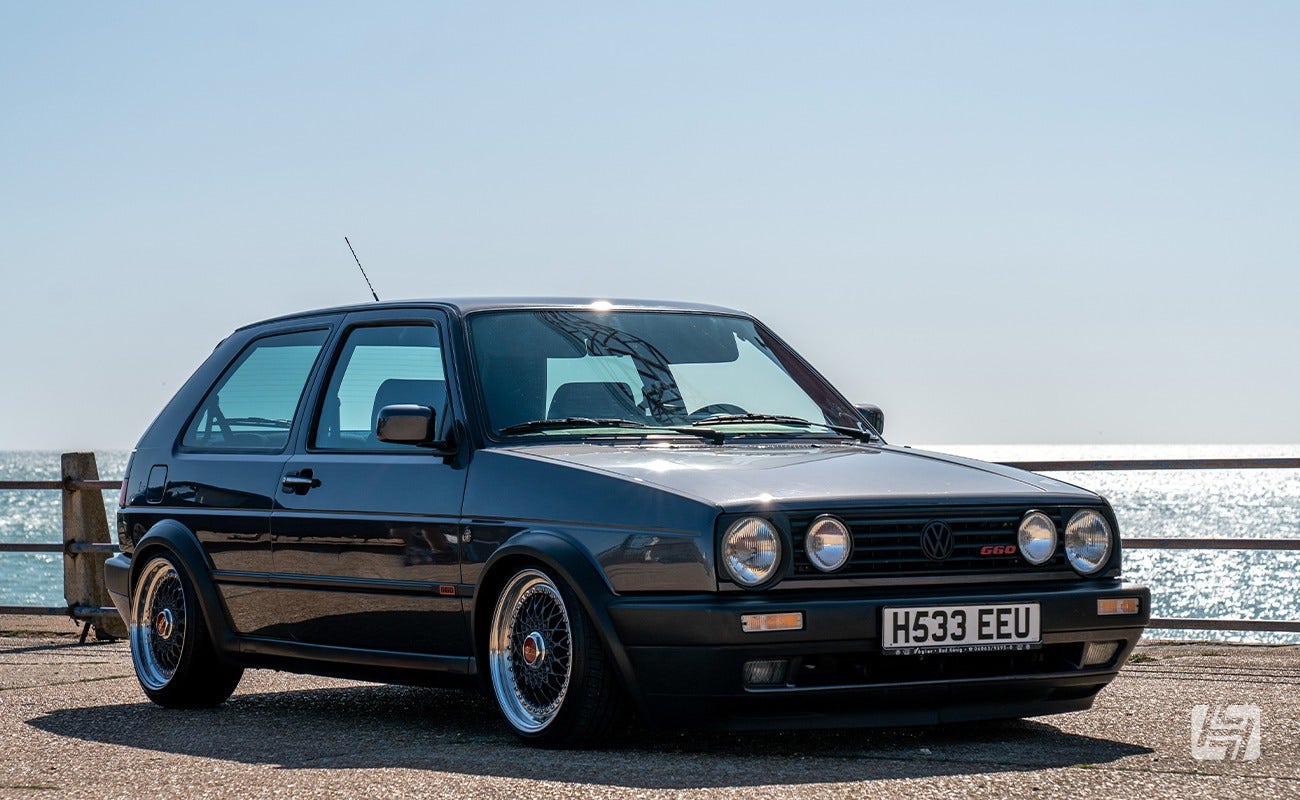

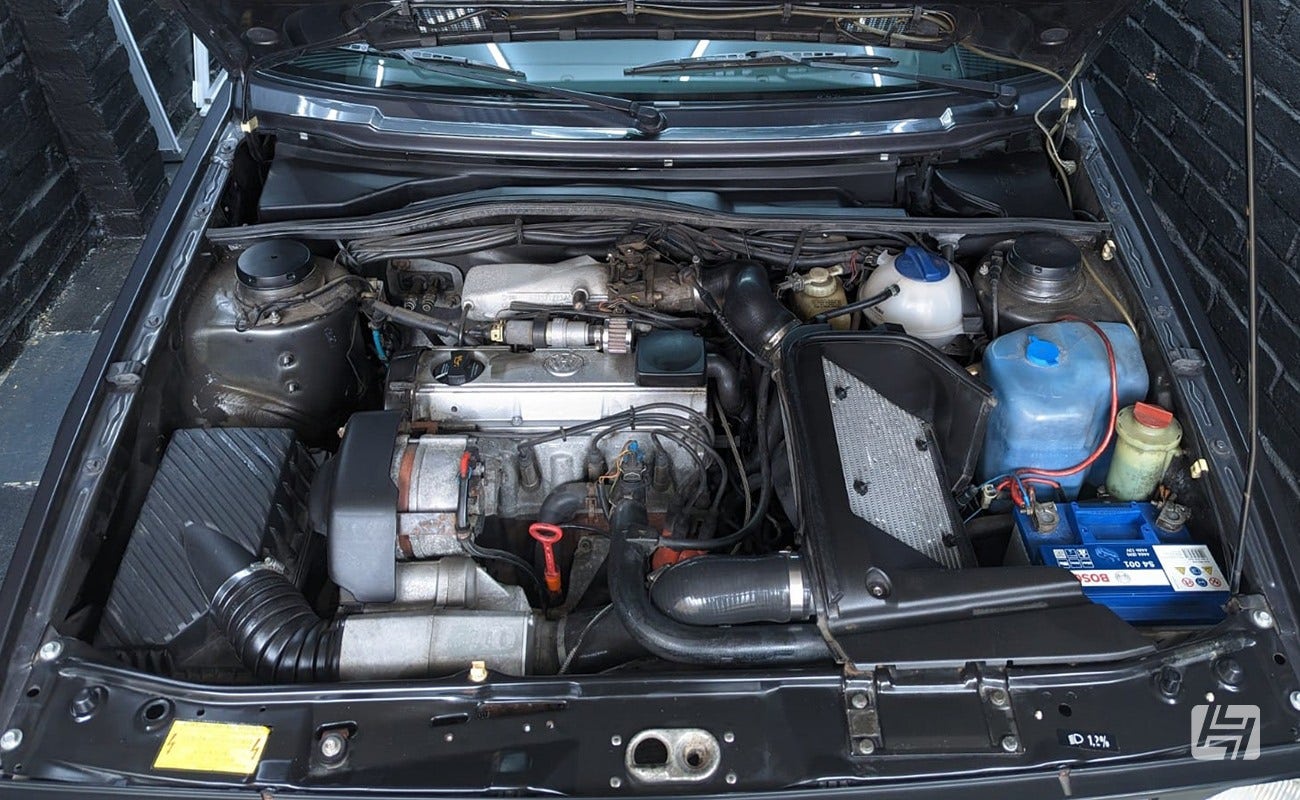

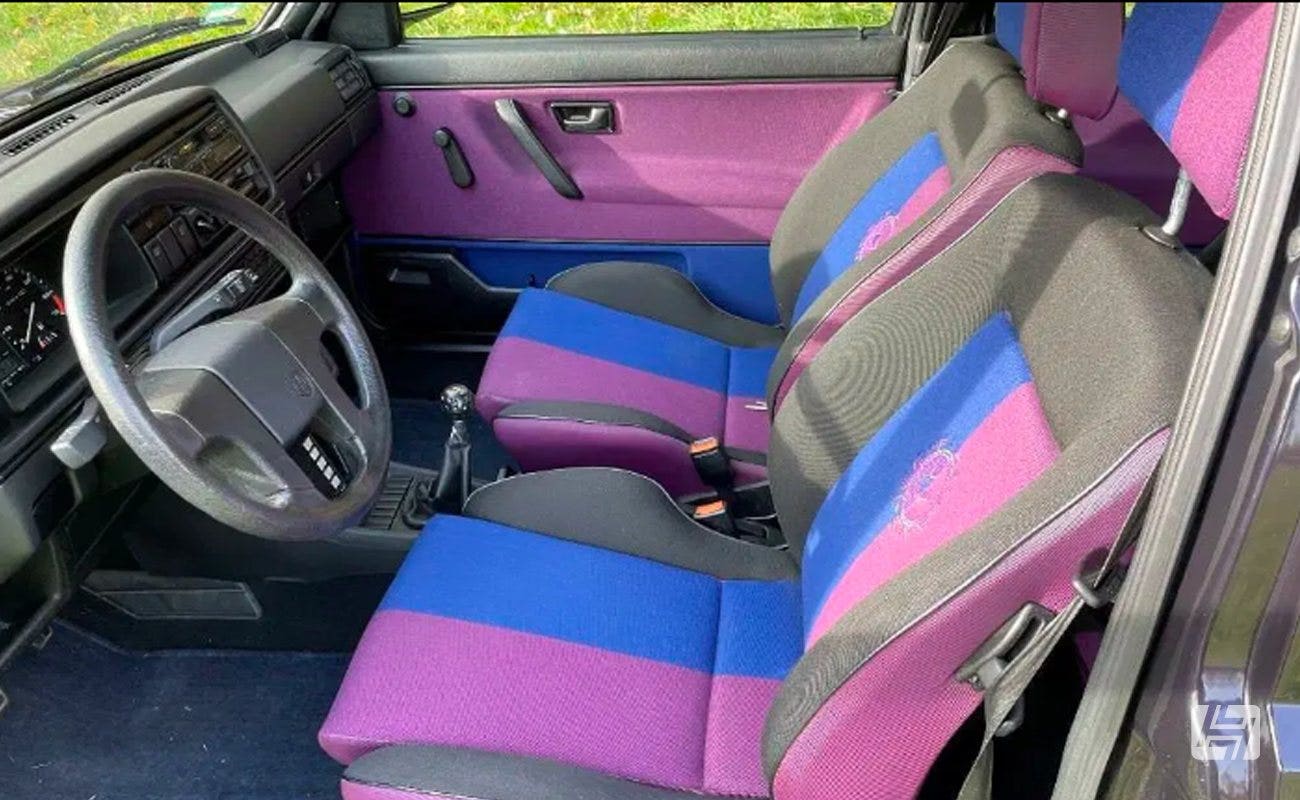

Homologation Specials: The Rallye
The Rallye Golf was as its name would suggest, VWs 4x4 Rally special, built by VW Motorsport in Belgium, it utilized a US spec body shell, a Syncro drive train, pioneered by VW on the 1986 Golf Syncro and a slightly different variant of the G60 1781cc PG motor, this was due to the FIA rally regulations enforces rules on force induced cars, and the multiplier effect of the Supercharger on the engine capacity, as a result, the new engine was coded 1H and was 1763cc, otherwise nigh on identical to the PG. The same couldn't be said for the Rallye's looks, big Audi Quattro-style box arches had been grafted on, resulting in new bumpers, which in turn led to the Rallye's distinctive front end, featuring 2 rectangular "projector" style DE lenses as opposed to the familiar "twin-rounds" of the GTI. The Rallye's motorsport career was effectively stopped before it was started when the FIA introduced rules that effectively rendered the VW completely uncompetitive.
During the Rallye's short motorsport life, it wasn't unheard of for the VW Motorsport technicians to have to replace the supercharger after every stage was completed. This led to VW having 5000 cars (the homologation requirements) sitting around with no Rally Teams wanting to buy them, so they set about marketing them as road cars. In Germany, you could spec a Rallye Golf exactly to your requirements, with the base car coming no better equipped internally than a stock GTI, save for the 1/2 leather seat and steering wheel, but for the 70 official UK models, it was a different story.
The Rallye Golf was an expensive car back in the day, with a £20,000 price tag (similar to that of a reasonably high spec BMW 5 series) and an 8v GTI could be had for little over £10,000. VW needed to do something to sell the Rallye on its luxury credentials and not just its performance (which somewhat embarrassingly was slower than a GTI 16v of the same era), so they did what they knew best, and ticked all the option boxes. The official UK car was named the Rallye Golf SE, though officially imported, it was still only available as a LHD. Plans to sell the Rallye golf in the US were never followed up, but it is believed that a couple of prototype cars were made.
VW also released a G60 Syncro which was a combination of both the Rallye and the FWD G60, utilizing the Syncro 4x4 system from the Rallye, but in a stock G60 shell, with the addition of the Syncro shallow boot floor. One of the rarest G60s available.
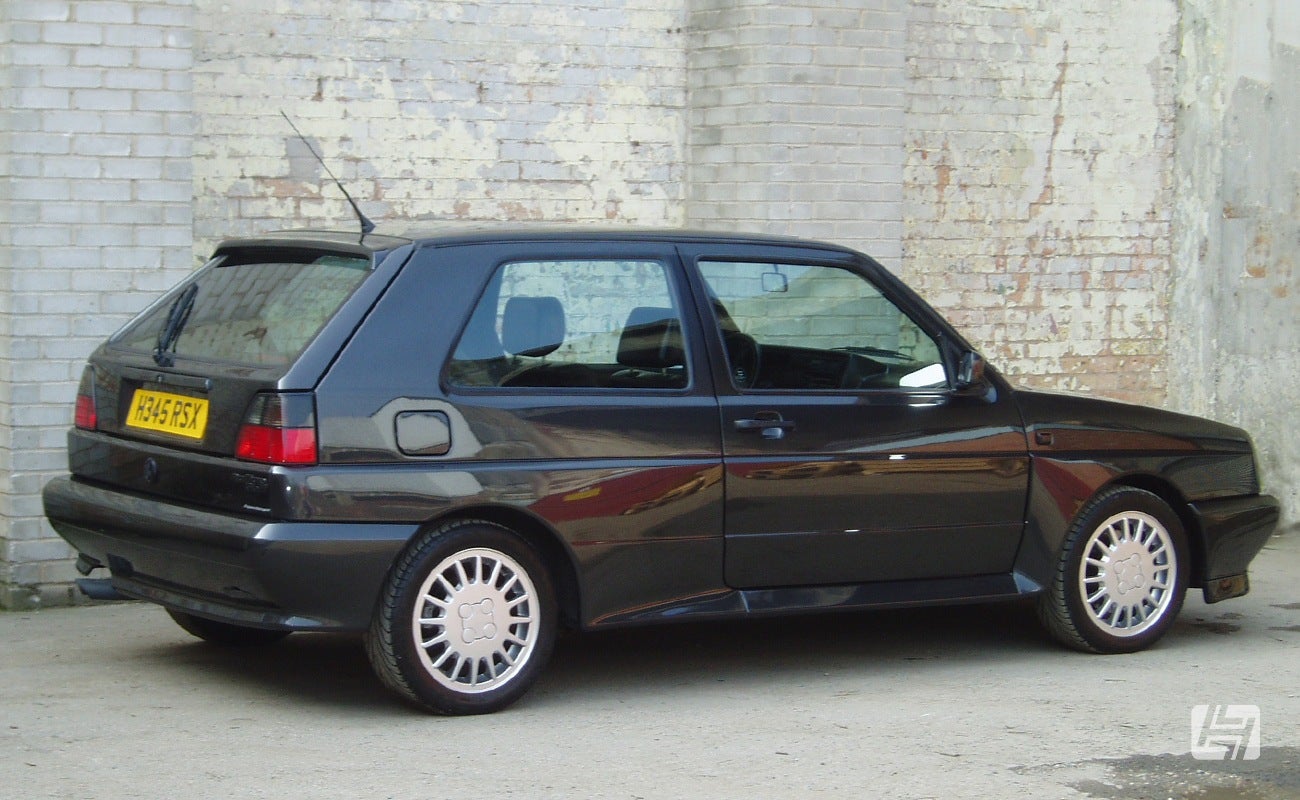

The Rarest Mk2 Golf: The Limited
The Golf Limited was a VW Motorsport-built special, with 71 being made, 69 of which were 5 doors - they featured a 210bhp 16v G60 motor (3G code), BBS RM split-rim wheels, Syncro 4wd, USDM bumpers, single lamp blue trimmed grilles, tinted Hella tail-lamps and exclusive VW Motorsport badging, they were available in one colour only, Black Metallic. Perhaps unsurprisingly, given their exceptional spec, they were originally built for VAG Executives. This astonishingly fast car was capable of hitting 0-60mph in a little over 6 seconds then heading on towards a top speed of nearly 155mph. Until the R32 Mk4 Golf came along, it was the fastest production VW.
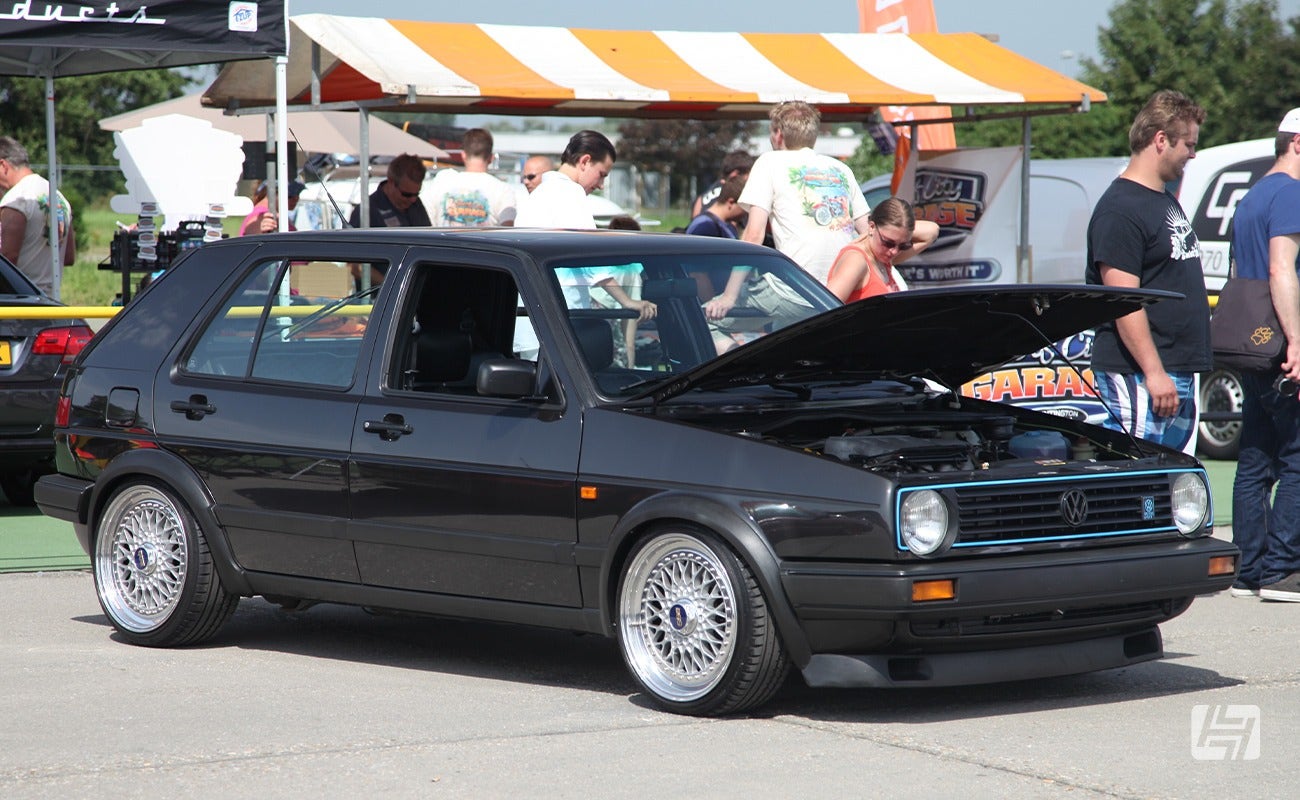

Off Road: The Golf Country
This leaves possibly the oddest Mk2 Golf of all, the Golf Country. Built by Steyr-Daimler-Puch, each car started life as a stock 4-door Golf CL Syncro, with the body raised around 120mm, the engine and gearbox lowered. The car was very popular with customers in the Alpine regions. Externally the car featured bull bars, and a hinged spare wheel carrier mounted on the rear of the car.
The Country was usually fitted with a re-tuned version of the Digifant 8v GTi unit. There was also a special edition "Chrome Edition" Country available which featured chrome bull bars, chromalux glass, and chromed "CalMaster" two-piece steel wheels.
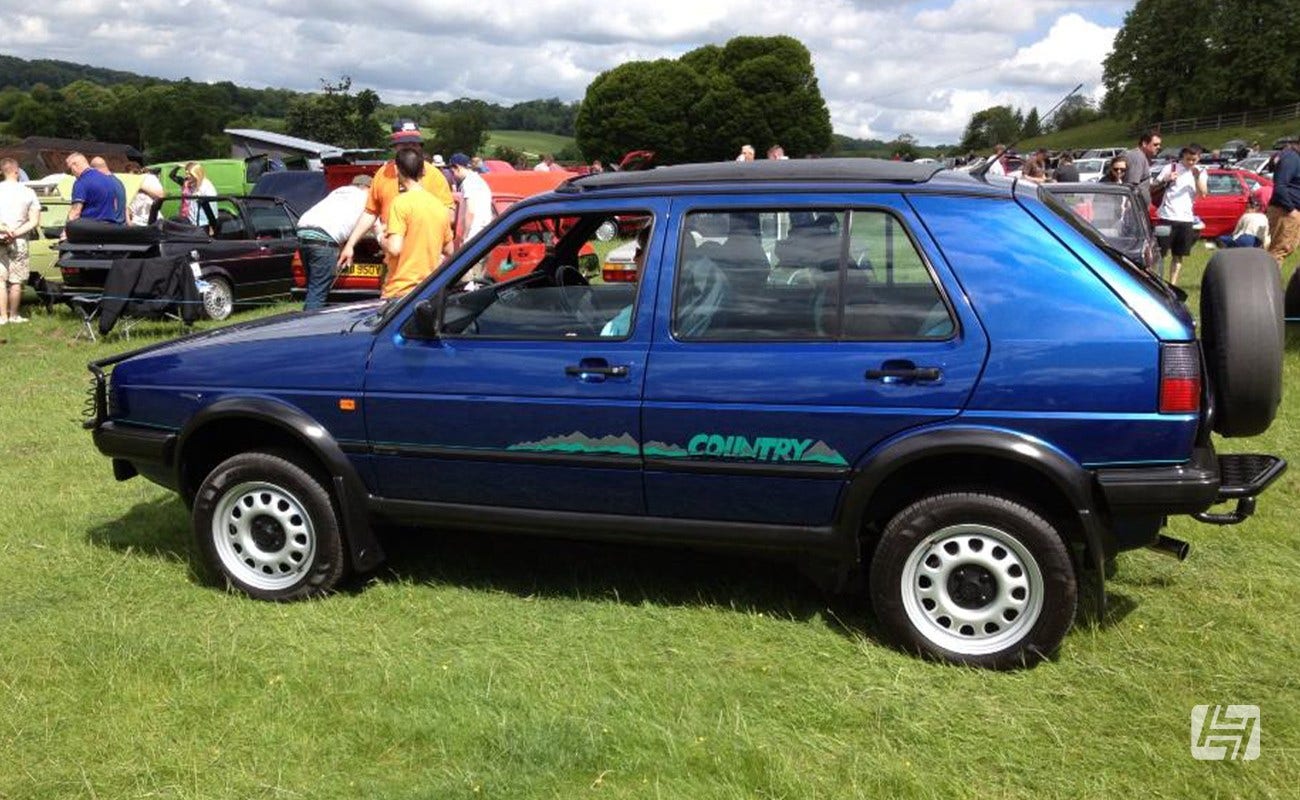

The Jetta Mk2
The Mk2 Jetta was VW's longest-running Jetta model, unlike the Mk1 Jetta, which could almost be seen as an afterthought by VW, the Mk2 had always been planned for. Launched in 1985 in the US, the Jetta quickly secured the title of best-selling European car in the American market and was outselling the Mk2 Golf at a rate of 2 to 1. Unlike the Golf, however, production of the Jetta remained in Wolfsburg.
Overall the new Jetta was a more refined car, with room for 5 as opposed to the 4 of the Mk1, and moves had been made to reduce vibration transmitted through the engine mounts. One of the strangest accolades afforded to the 2nd generation Jetta was that of "Car of the Year" as voted for by the North American Farmers Journal. Production of the Jetta continued until 1992, when it was replaced by the Vento in Europe, and the Jetta III in the US.
Also available as a 3-door Coupe in certain European and US markets, the Jetta followed the same restyling pattern as the Golf models.
It's also worth noting that, just like the Citi Golf in South Africa, the Jetta Mk2 lived on in China being manufactured by FAW-Volkswagen from 1991 to 2013. Initially, they were sold in the same form, however in 1997 the "Jetta King" model took over, which sported a Passat-style facelift and restyled rear lights, and a more integral bumper design. This was upgraded further with the "Jetta Pioneer" manufactured between 2010-2013. Inside, to match the sleeker exterior a dashboard not dissimilar to that of a Corrado was installed.
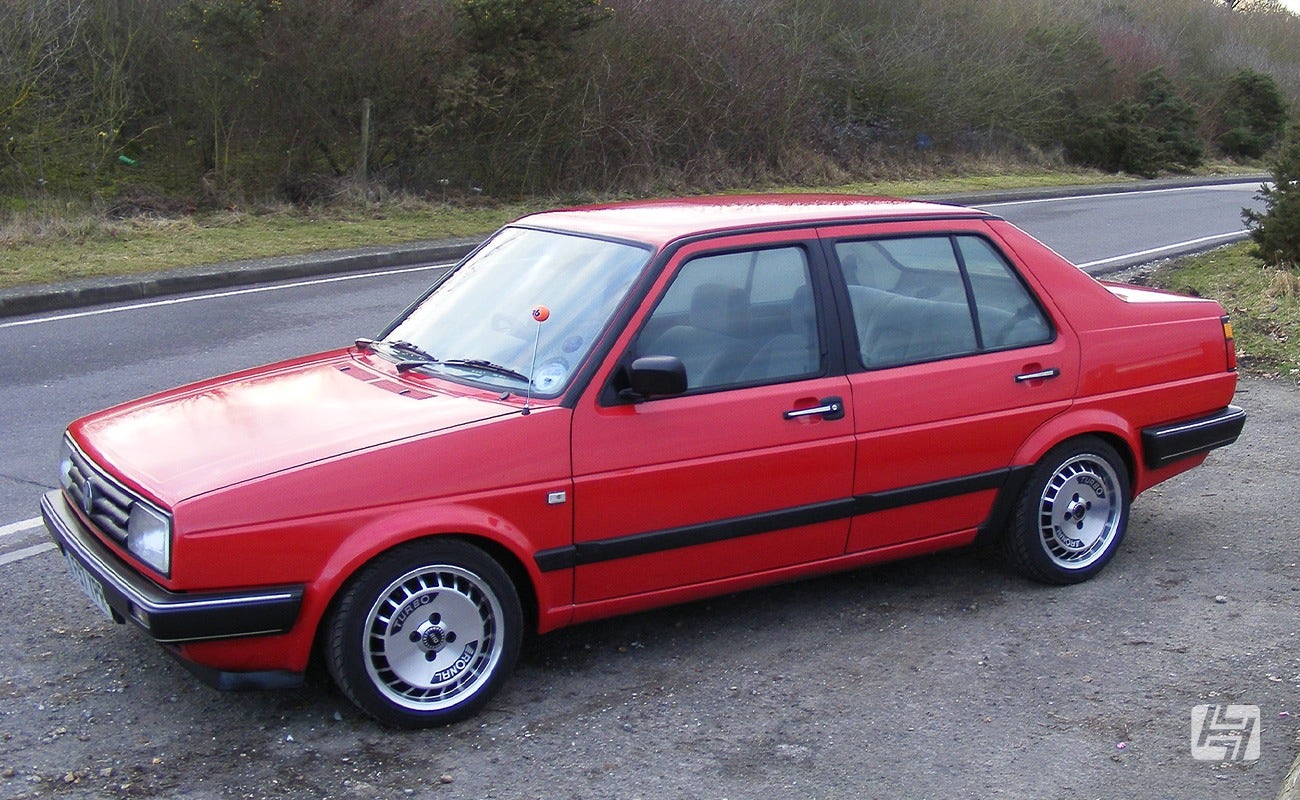

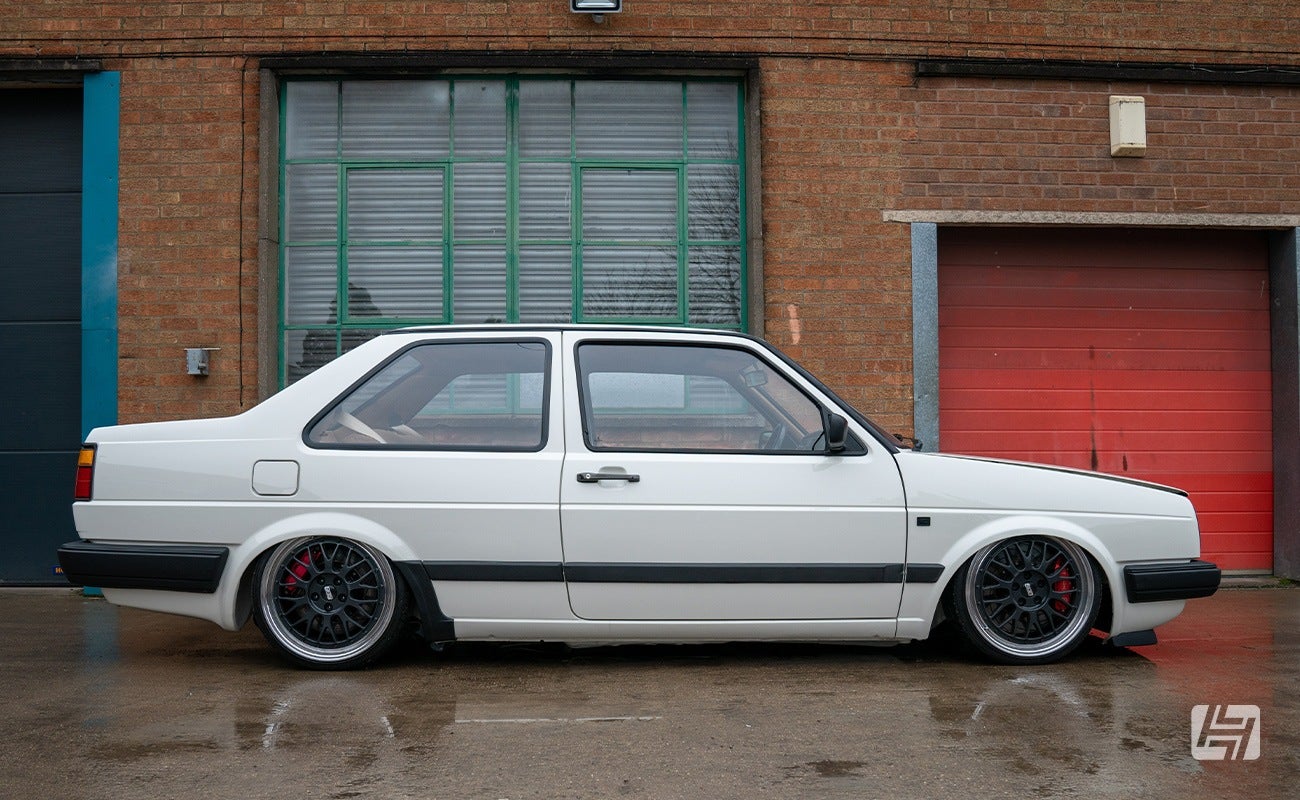

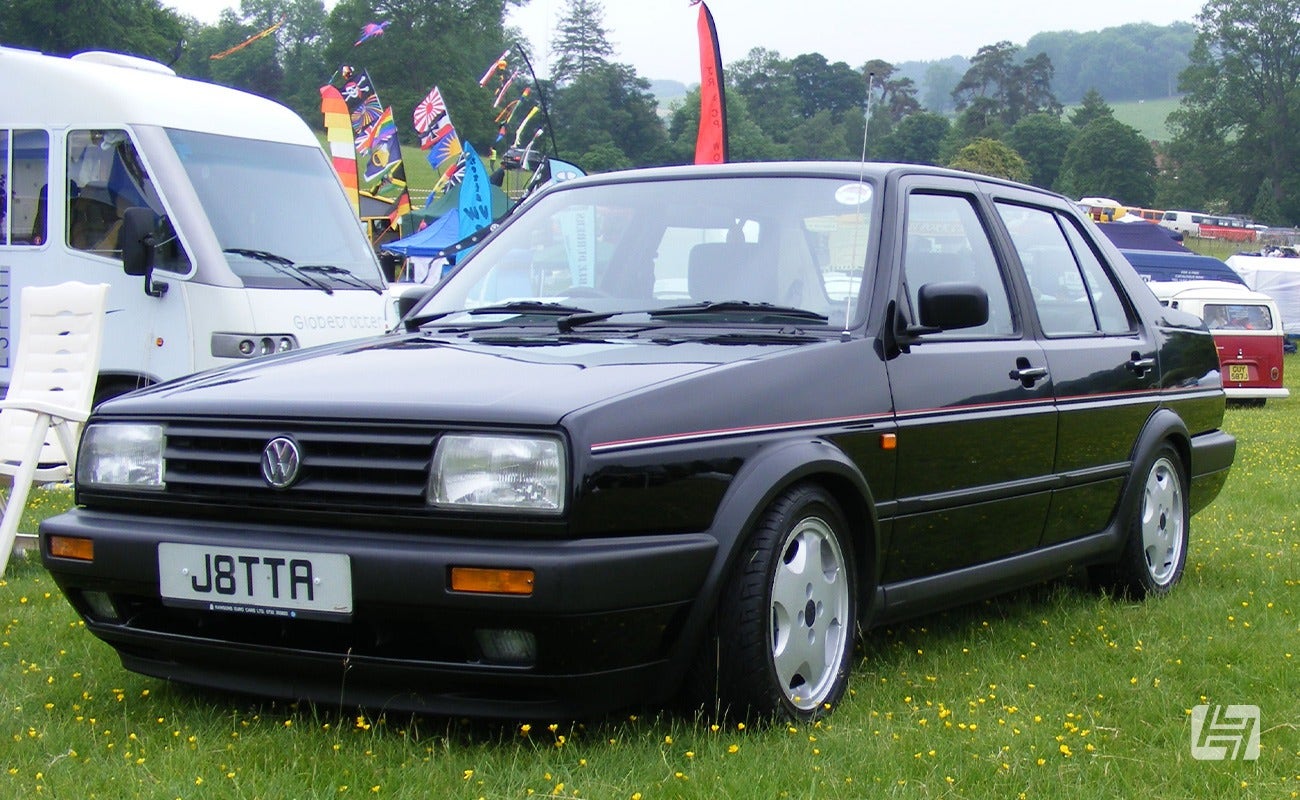

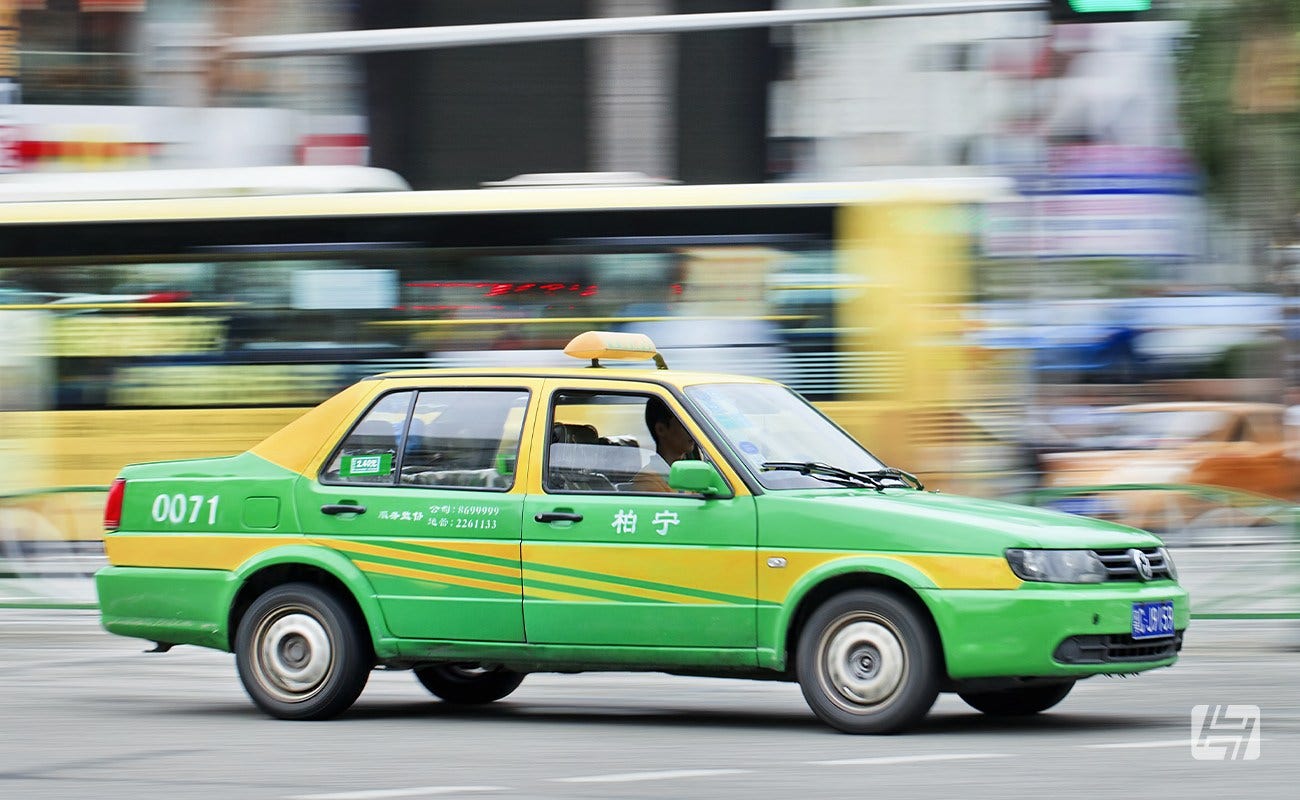

A Mk2 Golf Estate?
Volkswagen never produced an estate version of the Mk2 Golf, but a few enthusiast attempts have been made over the years... Check out this very convincing effort we spotted at a show in the UK a few years ago. Would you want one?!




As with all of these history articles, we hope we've answered any burning question you may have had, and perhaps explained a few things you might not have even considered too.
Andy




 Beetle
Beetle
 T2 Bay
T2 Bay
 T2 Split
T2 Split
 T25
T25
 Transporter T4
Transporter T4
 Transporter T5
Transporter T5
 Golf Mk1
Golf Mk1
 Golf Mk2
Golf Mk2


 911
911
 996
996
 997
997
 986 Boxster
986 Boxster
 987 Boxster
987 Boxster
 912
912
 944
944
 924
924


 Defender
Defender
 Discovery Series 1
Discovery Series 1
 Discovery 2
Discovery 2
 Series 1, 2 & 3
Series 1, 2 & 3
 Freelander
Freelander
 Freelander 2
Freelander 2




